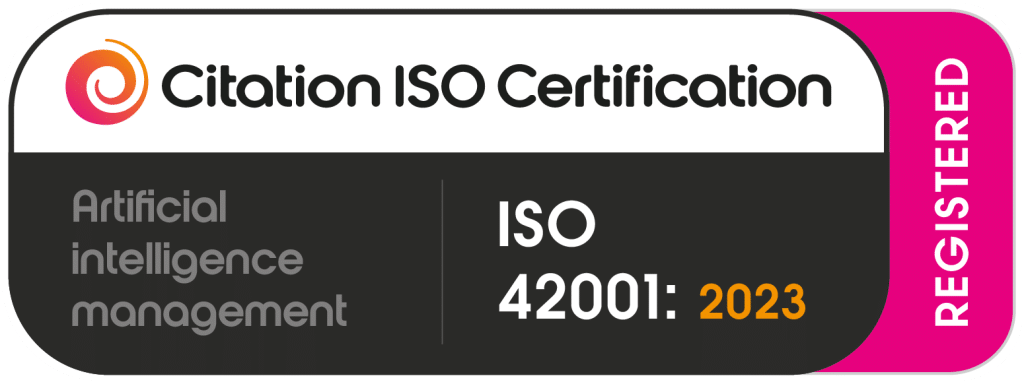Data literacy has become a crucial aspect of modern business operations. Over the past decade, data has evolved from being a valuable asset to an essential component for company growth, productivity, and success on a global scale. The vast amounts of data collected can offer insights into consumer behavior, financial performance, and more, but only when used effectively. While business intelligence (BI) techniques and predictive analytics help you to manage data, data literacy is still a necessary skill for maximizing these tools.
The Challenge of Data Literacy
Many companies face a shortage of AI and data literacy skills. Gartner predicts that, by 2050, half of all organizations will lack sufficient data literacy skills. This will hinder their ability to derive value from data. To fully benefit from data and emerging technologies, companies must enhance their data literacy. Improving your data literacy skills will help you build a better business. Raising the data literacy level with your business will benefit your team, and improve business results. Growing your team’s data skills doesn’t mean everyone needs to become an expert in data science. Rather, it’s more about equipping your team to become more acquainted with data skills, including data management, data visualization, data cleaning, and more. While not everyone needs to become a data analyst they should become equipped to understand your data ecosystem, operate within your data landscape, and manage big data, or different data types. Building technical skills enables everyone to make better decisions in a meaningful way. Understanding best practices in data management empowers business leaders too.
What is Data Literacy?
Data literacy is now a key performance indicator (KPI) for businesses. Data literacy extends beyond basic reading and writing skills, requiring employees to:
- Read, write, and communicate data in context.
- Understand data sources, data analytics, construction, and analysis methods.
- Explain the use cases, applications, and values derived from data.
Most companies are moving towards becoming data-driven, improving decision-making, and addressing ethical and legal data concerns. Achieving widespread data literacy remains a significant challenge.
Why is Data Literacy a Struggle?

Despite widespread recognition of data’s importance, many employees do not understand its role in their jobs. Data literacy should not be confined to data analysts and data scientists. Analytical skills are beneficial for everyone in your business. Everyone in an organization needs to understand how data affects their work. Moreover, data professionals may lack clarity on their contributions within the business context. As data volumes grow, people without technical expertise struggle to keep pace with data-savvy peers. Censuswide reported data literacy findings after surveying over 7,000 business decision-makers worldwide:
- 76% of decision-makers lack confidence in working with data.
- Only 32% of senior leaders are considered data literate.
- Just 21% of 16-24-year-olds are data literate.
- 78% of employees are willing to invest time in improving data skills.
How to Improve Data Literacy Within Your Organization
To address these challenges, companies should adopt strategies to enhance data literacy:
Make Data a Business Matter: Ensure all employees recognize data’s importance. Data literacy should be a company-wide issue, not just a technical concern. Leadership should drive this initiative, fostering a data-driven mindset across all business processes.
Appreciate the Process: Data literacy development is gradual. Rushing the process can lead to mistakes and reduced enthusiasm. Start small, allowing employees to witness success and become more inclined to participate.
Contextualize Data: Tailor data presentation to employees’ roles, experience, and background to make it more accessible and relevant.
Increase Access Gradually: As employees master their data sets, provide access to more data for exploration and learning. However, protect confidential information from being used for learning purposes. Consider implementing a data literacy project to start with, and incrementally grow the training programs.
Provide Data Literacy Training: Access to data isn’t enough. Employees need training and access to a data literacy program. Data literacy programs help your teams learn to interpret data and develop critical thinking skills. Most employees are eager to learn, so resistance is unlikely.
Choose the Right Tools: Select systems and tools that meet your company’s needs. These should allow data sharing across relevant departments and be user-friendly for non-technical employees.
Why is Graphite the Ideal Data Literacy Tool?
Graphite Note simplifies data analysis by uncovering patterns, identifying problems, and spotting opportunities without requiring coding skills. It enables all team members to understand data stories, as analysts can create visual narratives in Graphite Note. These insights can be shared with decision-makers and leaders who need help understanding data, aligning with the vision of enhancing data literacy across the organization. That is the Graphite note Vision.





